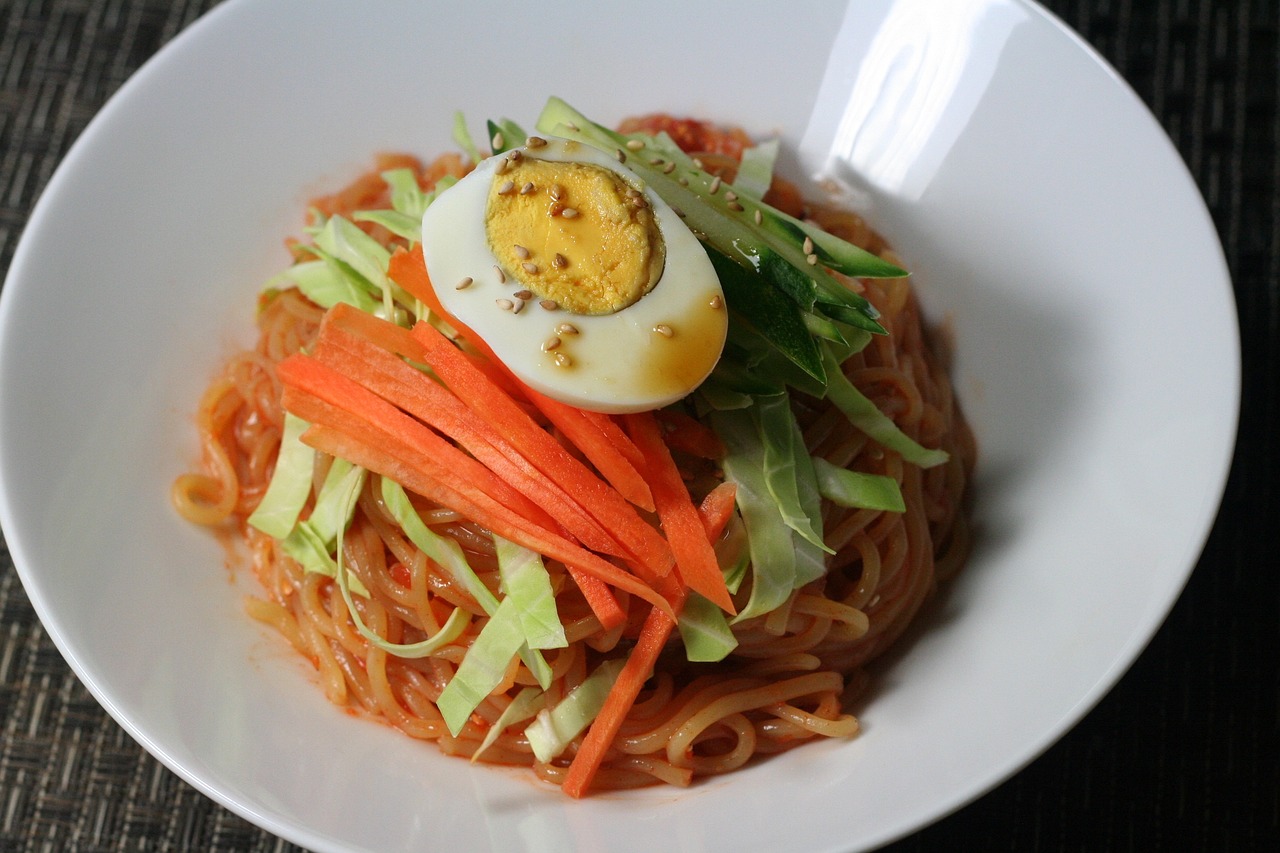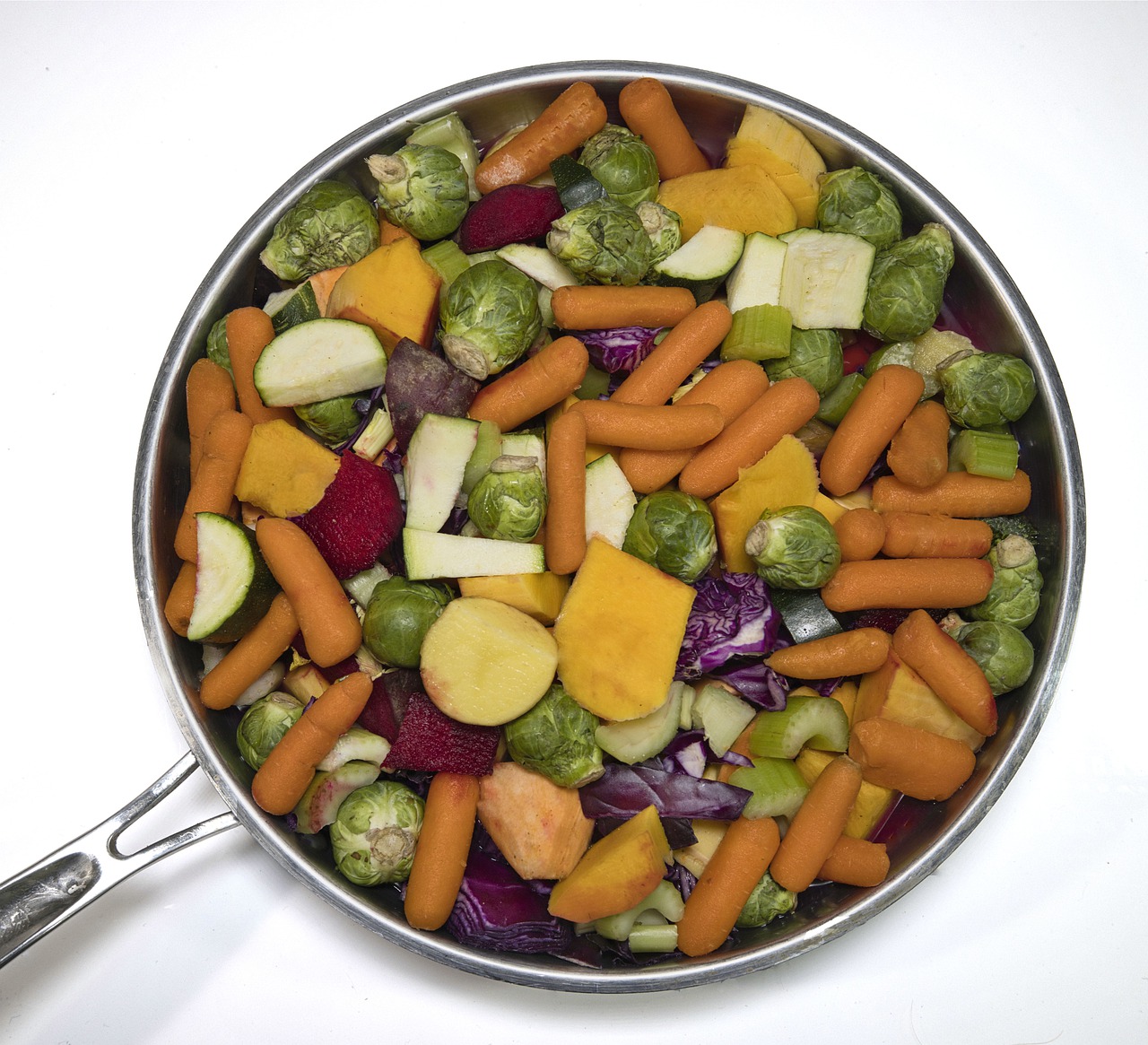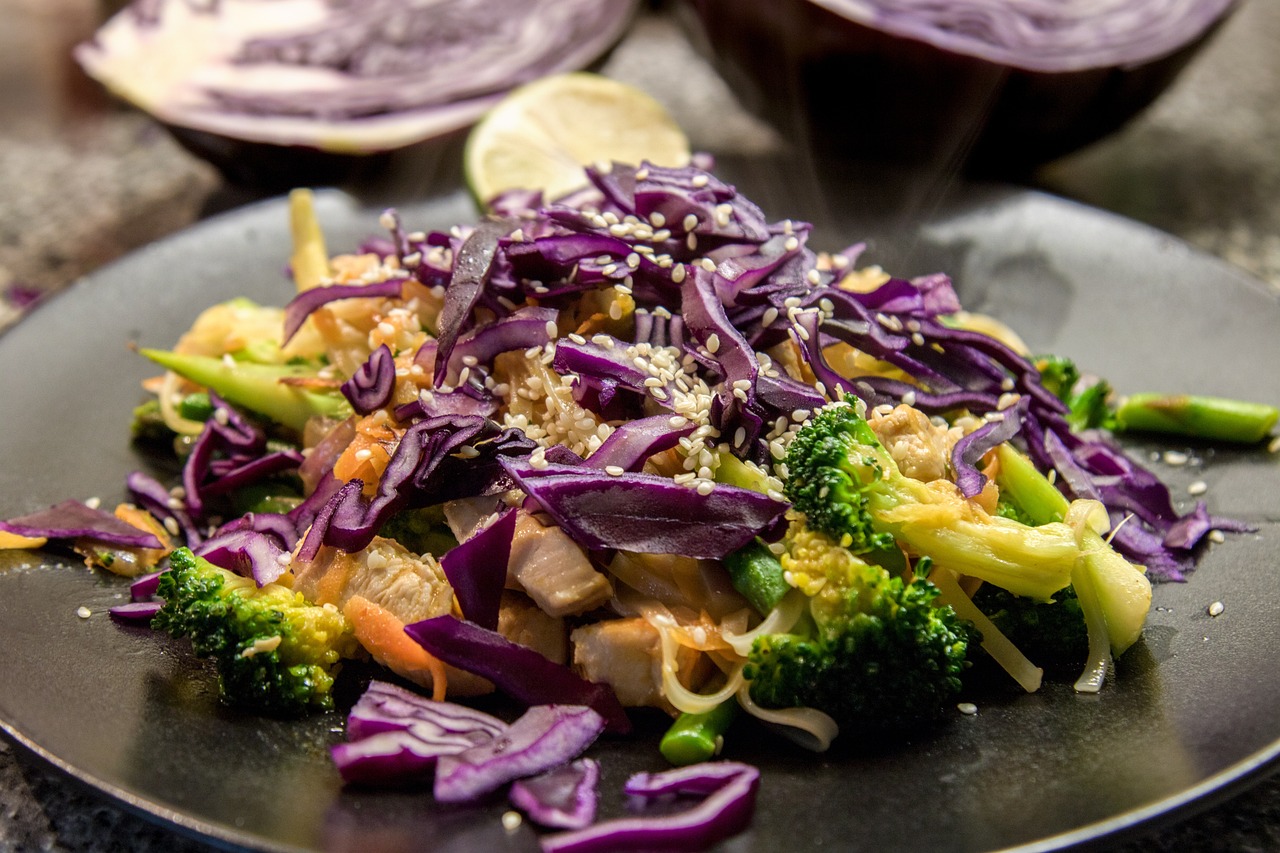Chow Mein: Stir-Fried Noodles with Vegetables and Protein

Chow Mein is a beloved Chinese dish that has captured the hearts and taste buds of people around the world. The name itself, which translates to "stir-fried noodles" in English, perfectly encapsulates the essence of this flavorful and versatile meal option. Imagine a sizzling hot wok, filled with an enticing mix of tender noodles, crisp vegetables, and savory protein, all expertly tossed together to create a symphony of flavors and textures.
When you take your first bite of Chow Mein, you are greeted with a delightful explosion of tastes - the umami richness of the sauce, the crunch of the vegetables, and the satisfying chewiness of the noodles. It's a dish that not only fills your stomach but also satisfies your soul, leaving you craving for more with each bite.
What makes Chow Mein truly special is its ability to cater to a wide range of preferences and dietary requirements. Whether you are a meat lover, a vegetarian, or someone who prefers seafood, there is a Chow Mein variation out there that is perfect for you. The dish is like a blank canvas, ready to be customized and personalized to suit your taste preferences and culinary creativity.
As you delve into the world of Chow Mein, you'll discover a rich history that dates back to ancient China. Over the centuries, this humble dish has undergone various transformations and adaptations, each adding its own unique twist to the classic recipe. From the bustling streets of Beijing to the bustling kitchens of home cooks, Chow Mein has truly stood the test of time, proving itself to be a timeless favorite.
So, the next time you're craving a delicious and satisfying meal that is bursting with flavor and excitement, look no further than Chow Mein. Whether you enjoy it as a quick and easy weeknight dinner or as a show-stopping centerpiece for a special occasion, this iconic dish is sure to surprise and delight your taste buds with every mouthful.
History of Chow Mein
Chow Mein, a beloved Chinese dish, has a fascinating history that dates back to ancient culinary traditions. The origins of Chow Mein can be traced back to the Canton region in southern China, where it was initially created as a simple stir-fry dish consisting of noodles, vegetables, and protein. Over time, Chow Mein evolved and adapted to different regional tastes and cooking styles, eventually gaining popularity both in China and around the world.
One interesting aspect of Chow Mein's history is its migration to the United States during the 19th century, where Chinese immigrants introduced this flavorful dish to American diners. As Chinese cuisine gained popularity in the West, Chow Mein became a staple in Chinese-American restaurants, showcasing a fusion of traditional Chinese flavors with American culinary influences.
Throughout its history, Chow Mein has undergone various transformations and interpretations, reflecting the diverse cultural influences and culinary innovations that have shaped this iconic dish. From humble beginnings in Chinese villages to upscale restaurants in cosmopolitan cities, Chow Mein has maintained its status as a versatile and delicious meal option that continues to captivate food enthusiasts worldwide.
Ingredients for Chow Mein
When it comes to creating a delicious Chow Mein dish, the key lies in selecting the right ingredients that will bring out the flavors and textures of this beloved Chinese noodle dish. From the type of noodles to the choice of vegetables and protein, each component plays a crucial role in the overall taste and appeal of the dish.
Let's start with the star of the show - the noodles. Chow Mein traditionally uses thin, long noodles that are either steamed or boiled before being stir-fried to perfection. These noodles are essential for achieving the signature texture of Chow Mein, combining a slight chewiness with a tender bite that complements the other ingredients.
Next, we have the colorful array of vegetables that add freshness and crunch to the dish. Common vegetables used in Chow Mein include crisp bell peppers, crunchy bean sprouts, flavorful mushrooms, and vibrant carrots. These vegetables not only enhance the visual appeal of the dish but also provide a variety of textures and flavors.
When it comes to protein options, Chow Mein offers a range of choices to suit different preferences. From tender slices of chicken or beef to succulent shrimp or tofu, the protein component adds depth and heartiness to the dish. The protein is typically marinated and cooked separately before being combined with the noodles and vegetables.
Lastly, the flavorful sauces used in Chow Mein are what tie all the ingredients together, creating a harmonious blend of savory, sweet, and umami notes. Common sauces include a combination of soy sauce, oyster sauce, sesame oil, and hoisin sauce, which are added during the stir-frying process to coat the noodles and ingredients evenly.
By carefully selecting and combining these essential ingredients - noodles, vegetables, protein, and sauces - you can create a mouthwatering Chow Mein dish that is sure to impress your taste buds and satisfy your cravings for a flavorful and fulfilling meal.
Cooking Techniques
When it comes to mastering the art of preparing Chow Mein, understanding the is essential. Stir-frying noodles with vegetables and protein requires precision and skill to achieve that perfect balance of flavors and textures. Let's delve into the methods used to create this delectable dish:
- High Heat Stir-Frying: The key to a successful Chow Mein lies in cooking over high heat. This technique ensures that the noodles get that coveted crispiness while the vegetables and protein retain their crunchiness.
- Preparation is Key: Before you start stir-frying, make sure all your ingredients are prepped and ready to go. This includes cutting the vegetables, marinating the protein, and having the sauces within reach.
- Quick Cooking: Chow Mein is all about quick cooking. Once you start stir-frying, keep the process moving swiftly to prevent the ingredients from overcooking.
- Stir Constantly: To ensure even cooking and prevent sticking, keep stirring the ingredients in the wok continuously. This also helps distribute the flavors evenly.
- Seasoning at the Right Time: Seasoning plays a crucial role in the taste of Chow Mein. Add sauces and seasonings towards the end of cooking to prevent them from becoming too overpowering.
By following these with precision and care, you can elevate your Chow Mein to a restaurant-quality dish that bursts with flavor and authenticity.
Variations and Customizations
When it comes to Chow Mein, the possibilities for variations and customizations are endless, allowing for a truly personalized culinary experience. Whether you prefer a traditional approach or want to experiment with unique ingredients, Chow Mein offers a canvas for creativity in the kitchen. Let's delve into the diverse range of options available to customize this beloved dish:
- Regional Variations: Across different regions in China and around the world, Chow Mein has been adapted to suit local tastes and ingredients. From spicy Sichuan-style Chow Mein to the milder Cantonese version, each variation offers a distinct flavor profile that reflects the culinary heritage of the region.
- Protein Choices: While traditional Chow Mein often features chicken, beef, or shrimp as the primary protein, you can customize your dish by incorporating tofu, pork, or even a medley of seafood. The protein you choose can significantly impact the overall taste and texture of the dish.
- Veggie Medley: In addition to the classic mix of bell peppers, onions, and bean sprouts, you can experiment with a wide array of vegetables to add color, flavor, and nutrients to your Chow Mein. Consider adding broccoli, snow peas, carrots, or water chestnuts for a crunchy and vibrant twist.
- Sauce Selection: The sauce is a crucial component of Chow Mein, contributing to its signature umami-rich flavor. While a savory soy-based sauce is traditional, you can customize your dish by opting for a spicy chili sauce, a tangy hoisin-based sauce, or a sweet and sour glaze. The choice of sauce can elevate the dish to new heights of deliciousness.
By embracing the spirit of experimentation and innovation, you can create a Chow Mein dish that is uniquely yours, reflecting your taste preferences and culinary flair. Whether you stick to the classic recipe or venture into uncharted flavor territories, the beauty of Chow Mein lies in its adaptability and versatility. So, why not embark on a culinary adventure and discover the endless possibilities for customizing this timeless favorite?



 HazalVardal
HazalVardal 





